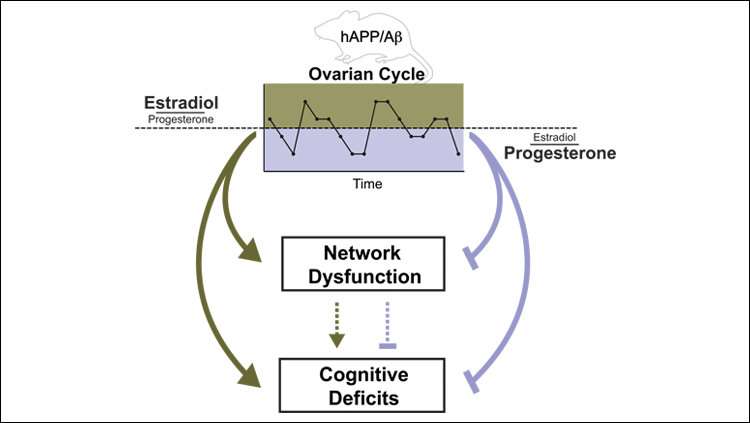The ovarian cycle comprises different stages with fluctuating female hormones. Female mice brewing Alzheimer's toxicity (hAPP/Abeta mice) spend more time in estrogen-dominant stages of their reproductive cycles (in brown) than their healthy, otherwise identical sisters without toxicity. With Alzheimer's toxicity brewing, these estrogen-dominant stages promote dysfunction in brain networks and in memory. In contrast, the progesterone-dominant stages (in purple) quell the problems. Could patterns of reproductive cycles in young women predict risk for developing Alzheimer's -- or open the door for prevention and early treatment in young women at risk for the disease? Credit: Arturo Moreno
Female mice destined to develop Alzheimer's-like pathology and related cognitive impairments display a unique pattern of fluctuation in sex hormones during the ovarian cycle, finds new research published in eNeuro. This study suggests the natural reproductive cycle may provide a new window into Alzheimer's Disease (AD) risk among young women.
AD begins to develop decades before the first clinical symptoms emerge. This means the disease may already be progressing during a woman's reproductive years. Dena Dubal and colleagues asked whether the hormones—specifically estrogen—released during the natural ovarian cycle promote disease progression in at-risk individuals.
Despite similarities in cycle length and fertility, the researchers found AD model mice spent a greater portion of time in stages with high estrogen levels than control mice. These stages were associated with impaired learning and memory and abnormal activity in AD-affected brain regions. The researchers also observed a sharp increase in beta-amyloid production during one of the high-estrogen stages. These findings emphasize the importance of incorporating female biology into the study of nervous system disorders.
More information: eNeuro, DOI: 10.1523/ENEURO.0132-17.2018
Provided by Society for Neuroscience
























